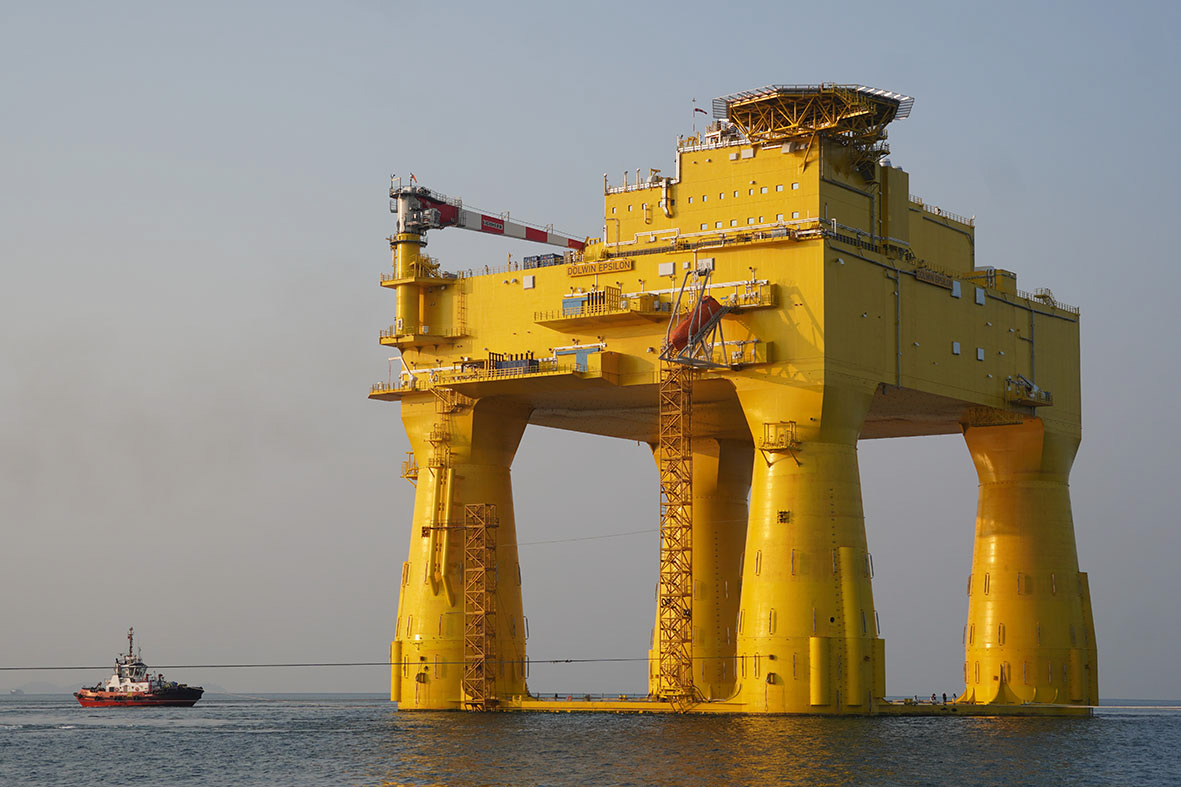DolWin epsilon converter station begins voyage to Europe

The DolWin epsilon on its way to Norway
(Source: TenneT)
Heavy-lift ship, Mighty Servant 1, has embarked on its voyage from Singapore to Norway loaded with the DolWin epsilon offshore platform. Expected to take about 60 days, the trip will take the Mighty Servant 1 and its valuable cargo over 13,000 nautical miles through some of the world’s most challenging seas around the Cape of Good Hope to its destination at Aibel Shipyard, Haugesund in Norway.
The 900-MW offshore platform left the newly named Singapore shipyard, Seatrium Limited (established as a combination of Sembcorp Marine and Keppel Offshore & Marine), on October 15th following three years of construction and more than ten million man-hours. The platform is not yet complete, however.
On arrival in Norway, Seatrium partner Aibel will install more technical equipment. Aibel subcontractor Hitachi Engineering will also supply and install high voltage direct current (HDFC) technology, the converter and the transformers.
TenneT claims to be breaking new ground with the Dolwin5 grid connection since a 66kV direct connection will be used for the first time, rendering a wind farm transformer station unnecessary. Instead, the wind power produced off the coast of Lower Saxony will be transmitted directly as three-phase AC current to TenneT’s DolWin epsilon converter platform.
This meant a new approach to system infrastructure. The wind farm’s technical systems are now located on the platform and the elimination of the wind farm transformer station cuts cost, saves time and interference with the marine ecosystem, TenneT said.
A special feature of the 82m-long, 73m-wide, 84m-high platform is the gravity-based foundation. So far, this has only been tried once for Dolwin beta. The principle is one of a self-installing, gravity-based construction.
The platform is slowly lowered to the seabed, in 31m of water, by ballasting the four steel legs of the platform with water. The water is then replaced with heavy gravel to secure the platform in place permanently for 30 years. No piles have to be driven into the seabed and the installation is quieter and less disruptive to marine life. At the end of its life, the ballast can be removed from the hull and the complete platform towed to a harbour for dismantling.
TenneT COO, Tim Meyerjürgens, declared: “Following the recent commissioning of DolWin6, this project is now also on the home straight – this is of enormous importance as the grid expansion in the North Sea must be accelerated in order to achieve our expansion targets in Germany. With DolWin5 and the elimination of the transformer station, we can demonstrate that we are pursuing and implementing more efficient solutions. This is only an intermediate step before we set new standards with the 2-GW programme.”
The structure of the DolWin5 project has been designed as follows. The platform will provide a grid connection for offshore wind farms using HVDC transmission. Due to the distance and the power to be transmitted, direct current is suitable for low-loss transport.
The wind power produced at sea is directly transmitted as three-phase AC current to TenneT’s DolWin epsilon converter platform, converted into direct current and transported via the 130km-long cable route to the Emden/East converter station. Here at the land station, the electricity is converted back into three-phase current and fed into the extra-high voltage grid via the transformer station.
